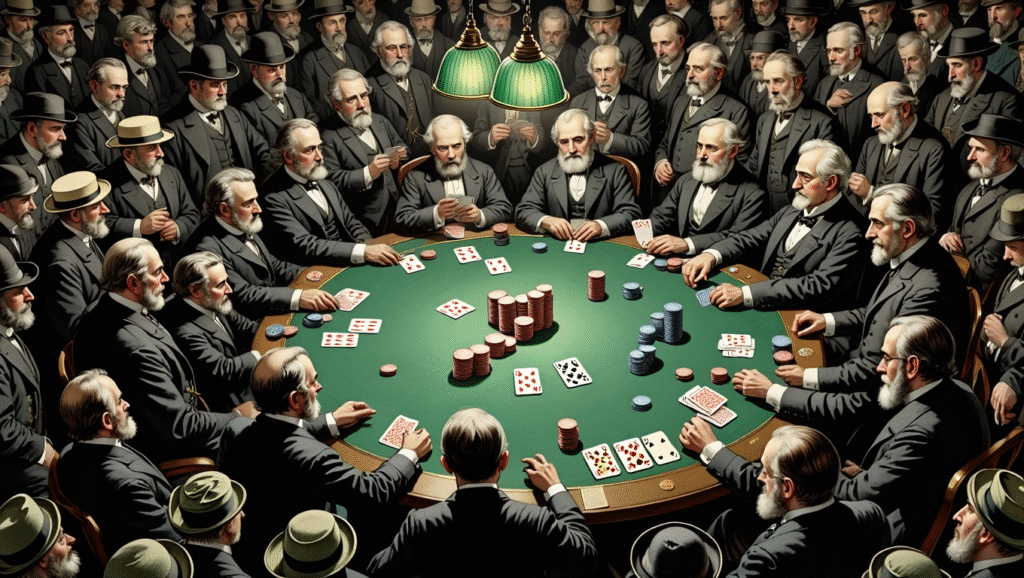
Origins in Italy
Baccarat is believed to have originated in Italy during the 15th century, with many historians attributing its creation to Felix Falguiere or Falguierein. The game was initially called “baccara,” an Italian word meaning “zero,” which refers to the value of the tens and face cards in the game. Early versions were played using tarot cards before the standard 52-card deck became common. Baccarat quickly spread among Italian nobility, where it was seen as a game of sophistication and exclusivity.
Migration to France
In the late 15th century, baccarat made its way to France, during the reign of King Charles VIII. French aristocrats embraced the game, which became a staple pastime in royal courts. In France, two main variations emerged: “Chemin de Fer” and “Punto Banco.” Chemin de Fer, meaning “railroad,” allowed players to take turns acting as the banker, making it a more strategic and interactive version. Baccarat soon became synonymous with wealth and elite social gatherings in France, reinforcing its reputation as a game of the upper class.
Adoption in England and the Rest of Europe
By the 19th century, baccarat spread to England and other parts of Europe. In England, it found popularity among the upper classes and was often played in private clubs. The game even made its way into literature and popular culture, featuring in works such as Ian Fleming’s “Casino Royale,” where James Bond is depicted as a skilled baccarat player. This exposure helped cement baccarat as a symbol of luxury and intrigue.
Introduction to the Americas
Baccarat arrived in South America before reaching the United States. In Cuba, a version called “Punto Banco” became popular, focusing less on player decisions and more on fixed rules. When baccarat reached Las Vegas in the mid-20th century, it was the Punto Banco variation that casinos adopted. This version simplified gameplay, making it accessible to a wider audience while retaining the aura of exclusivity by hosting it in special high-roller rooms with strict dress codes.
Evolution of Variants
Over time, different versions of baccarat developed to cater to various audiences. Chemin de Fer remained popular in Europe, especially in France, while Punto Banco dominated North America. Another variant, “Baccarat Banque,” offered a hybrid experience with a fixed banker role and became a staple in continental casinos. Each variation maintained the core mechanics but offered unique betting and gameplay styles, reflecting regional preferences and cultural influences.
Impact of Technology and Online Casinos
With the rise of the internet in the late 20th and early 21st centuries, baccarat found a new platform in online casinos. Digital versions made the game accessible to a global audience beyond exclusive casino floors. Live dealer technology further enhanced the experience, recreating the ambiance of a physical casino through high-definition streaming. Online baccarat contributed to the game’s resurgence, attracting both seasoned players and newcomers interested in its simple rules and high-stakes appeal.
Cultural Significance and Popularity in Asia
Baccarat holds a particularly strong position in Asian markets, especially in Macau, where it accounts for the majority of casino revenue. Its popularity in Asia can be attributed to cultural associations with luck, chance, and numerology. High-stakes baccarat tables in Macau and Singapore attract VIP players from across the region, reinforcing baccarat’s reputation as the “king of casino games.”
Modern Baccarat in Global Gaming
Today, baccarat is one of the most popular casino games worldwide, offered in nearly every major gambling establishment. The game’s blend of simplicity, elegance, and high-stakes potential continues to draw players. Whether in glamorous Monte Carlo casinos, the bustling floors of Las Vegas, or online platforms, baccarat maintains its allure as a game of chance with deep historical roots.
Legacy and Influence
The history of baccarat reflects more than just a card game; it embodies cultural exchange, social status, and the evolution of gambling. From Italian origins to global prominence, baccarat has adapted to changing times while preserving its core identity. Its journey through royal courts, exclusive clubs, and digital platforms illustrates how tradition and innovation can coexist in the world of gaming.